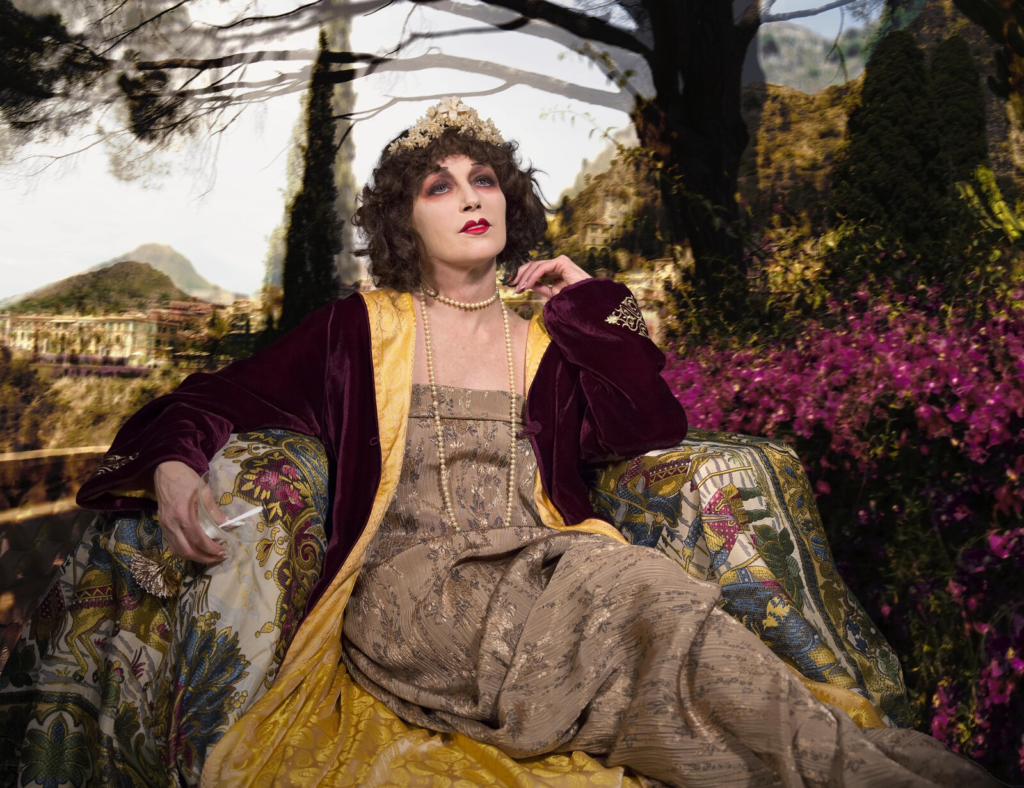Femininity artists
Cindy Sherman

About: Cindy Sherman, also known as Cynthia Morris Sherman, was born on January 19, 1954 in New Jersey, U.S.A. She is an American photographer who is commonly known for her elaborately disguised self-portraits that comment on social role-playing and sexual stereotypes regarding women.
Photo analysis:

This first image depicts a young woman standing outside what looks to be an office building. In my opinion the image represents a change in the concept of femininity. The woman’s hair is short, which would compare to the typically long hair women use to have, in order to make them appear more feminine. Her clothes appear to be smart casual, which ties in with the office looking building behind her, signifying that she could be applying for a job, which is something many women did not previously have. She has a look of determination on her face too, implying that she’s prepared for a new change. Overall, all these small details could potentially add up to make a compelling story about change and challenges with reforming the idea of femininity.

This image depicts a posh looking women, surrounded by flowers and luxuries. Femininity is often associated with nature, so the flowers surrounding her create a strong link back to the topic. As for her attire, her red lipstick, crown and beaded jewellery were all symbols of higher class women. This shows the viewer the societal standards that were presented to women during these times, meaning that women were always reaching to look like, have or be like the ideal women. Lastly, the empty wine glass in her hand is another link to the aristocracy of this time era as only posh or noble families would be able to afford such luxuries.
Shannon O’Donnell

About: Shannon is an artist and photographer. They studied BA Documentary Photography at USW Cardiff. Through a combination of documentary and performative approach, their practice explores the gendered experience, both personal and within contemporary and historical capitalist Britain. Their practice is informed by photographs, text, audio, moving stills and archival research. They created a short blog on the topic of femininity named ‘shrinking violet’.
photo analysis:

This image represents how most women use to have to act. We can see the hoover, symbolizing the fact that women had to take care of the house hold, as well as the drying rack behind her. The view into the kitchen also symbolizes the fact that women were expected to cook for their families or husbands. The way Shannon is dressed also holds significance, since women had to look their best at all times for their husbands, even whilst doing chores to manage the household. The stance they take in the image also represents a type of struggle to manage all of the tasks, as it looks as though they are trying to balance themselves.

In this picture, we are able to see that they are wearing heels in a kitchen. This is important as it signifies that cooking is a role that was expected of women, this was their one of their purposes within the family. The reflection of their legs in the oven also helps to solidify this view point. The black and white color scheme of the image makes the viewer believe that the image is suppose to be set further back in time, this also links back to the topic of women and their roles.
Masculinity artists
Sam Contis

about: Sam Contis is an American photographer, he was born in Pittsburgh Pennsylvania in 1982 and now currently lives in California. Her work has been exhibited widely, including at the Barbican Centre, London; Carnegie Museum of Art, Pittsburgh; Carré d’Art, Nîmes; and MoMA, New York. She is the recipient of a 2022 Guggenheim Fellowship and the author of Deep Springs (2017) and Day Sleeper (2020). Google Books
photo analysis:

This image represents masculinity due to the position the man is sitting in as well as the boxy lighting. Rough shapes like squares or rectangles are often associated with masculinity as opposed to softer shapes like circles which are more often associated with femininity. The black and white colours are also harsher which could be linked to masculinity due to it being stereotyped as rough or dominant.

In this photo, the hands appear rough showing that the person is hard working, this trait is often associated with masculinity. Once again the harsher contrast between the black and white tones of the image could link back to masculinity.
